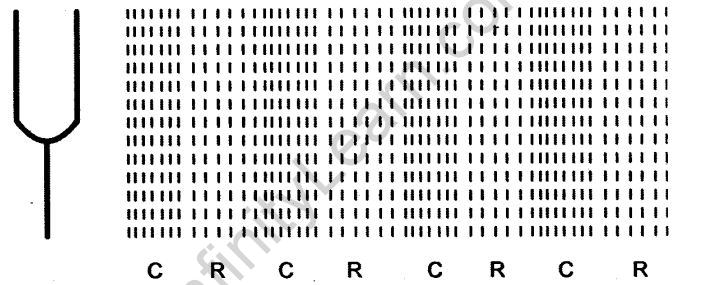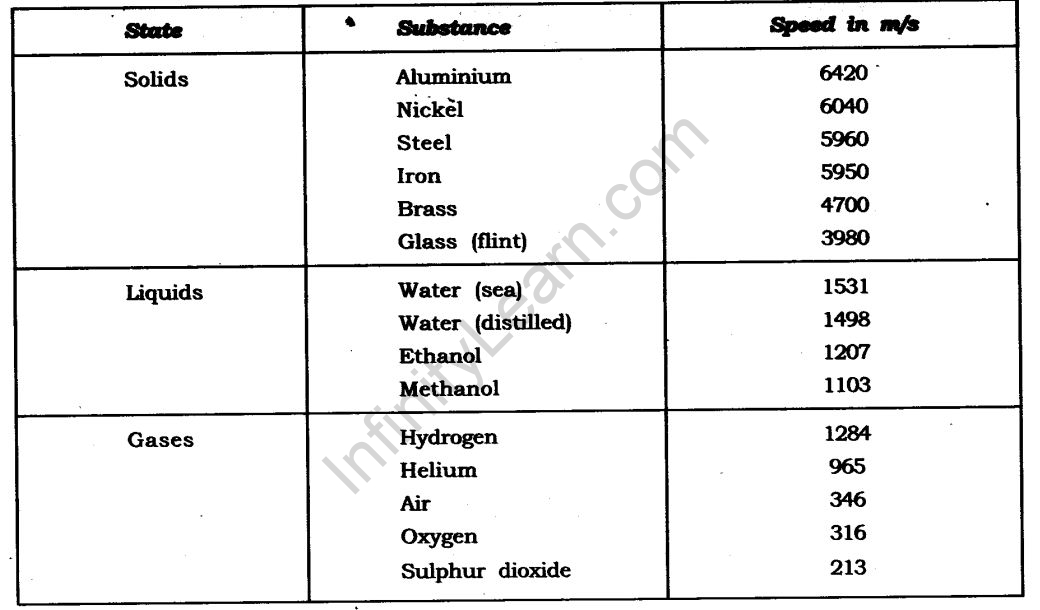Sound Class 9 Notes – Here We have provided summary and revision notes for Class 9 Science Chapter 12. This CBSE notes contains CBSE Key Notes, CBSE Revision Notes, Short Key Notes, images, diagrams of the complete Chapter 12 titled Sound of Science taught in class 9. If you are a student of class 9 who is using NCERT Textbook to study Science, then you must come across Chapter 12 Sound. After you have studied lesson, you must be looking for notes to memorize. Here you can get complete Chapter 12 Sound class 9 notes in one place.
CBSE Class 9 Science Notes Chapter 12 Sound
Facts that Matter
A sound is a form of energy which produces a sensation of hearing in our ears.
Propagation of Sound: Sound is produced by vibrating objects.
Medium: The matter or substance through which sound is transmitted is called a medium. It can be solid, liquid or gas. Air is the most common medium for sound propagation.
Wave: A wave is a disturbance that moves through a medium when the particles of the medium set neighbouring particles into motion. They in turn produce similar motion in others. The particles of the medium do not move forward themselves, but the disturbance is carried forward. This is what happens during propagation of sound in a medium, hence sound can be visualised as a wave. Sound waves are characterised by the motion of particles in the medium and are called mechanical waves.
When a vibrating object moves forward, it pushes and compresses the air in front of it creating a region of high pressure. This region is called a compression (C), as shown in following figure. This compression starts to move away from the vibrating object. When the vibrating object moves backwards, it creates a region of low pressure called rarefaction (R).

As the object moves back and forth rapidly, a series of compressions and rarefactions is created in the air. These make the sound wave that propagates through the medium. Compression is the region of high pressure and rarefaction is the region of low pressure.
Experiment to show Sound needs a medium:
Activity:
- Take and electric bell and airtight jar.
- Fit the bell inside the jar and attach to battery.
- With air still in jar ring the bell.
- Now take out air by vaccumization.
- Ring the bell again.

Observation: Sound of bell can be heard when air is inside the jar. When air is taken out then sound cannot be heard.
Conclusion: This shows that presence of medium is necessary for propagation of sound waves.
Properties of Sound Waves:

Frequency: Number of oscillations of sound waves is called its frequency. The number of peak and troughs per unit of time will give frequency. It is represented by v (nu) and its SI unit is Hertz (Hz).
Time Period: The time taken to complete one oscillation is called its time period. Its unit is second and is represented by T.
Relation of frequency and time period:
v = 1/T
Amplitude: The magnitude of the maximum disturbance in the medium on either side of the mean value is called the amplitude of the wave. It is usually represented by the letter A. Its unit is meter.
Softness or Loudness of Sound: If the amplitude is smaller then the sound will be softer and if it is larger then sound will be louder. Higher amplitude helps the sound wave is travelling faster.
Speed of sound: It is the distance which compression or a rarefaction travels per unit of time.

So, Speed = Wavelength Frequency
The speed of the sound remains almost the same for all frequencies in a given medium under the same physical condition.
Speed of Sound in Different Media at 25° C.

Reflection of Sound: Sound reflects off a surface in the same way as light reflects and follows same rules of reflection. The incident sound and the reflected sound make equal angles with the normal and all three are in the same plane.
Echo: In bigger monuments and in large empty halls you can hear reflections of your sound after you speak something. This effect is known as echo. The sensation of sound persists in our brain for 0.1 seconds, so to hear echo the time difference between original sound and reflected sound should be more than that.
As you know speed of sound in air is = 344 m/s And 344 x 0.1 = 34.4 metre
So, the minimum distance required to hear an echo from a reflecting wall or surface should be half of 34.4, means it should be 17.2 metres.
Reverberation: Repeated reflections of sound results in persistence of sound and is called reverberation.
Use of Reverberation of Sound: Following instruments use this property of sound:
- Megaphones, Shehanais, Trumpets
- Stethoscope
- Curved dome of concert halls
Range of Hearing in humans:
From 20 Hz to 20000 Hz
Sounds below 20 Hz are called infrasonic.
Sounds above 20000 Hz are called ultrasonic.
We hope the given CBSE Class 9 Science Notes Chapter 12 Sound Pdf free download will help you. If you have any query regarding NCERT Class 9 Science Notes Chapter 12 Sound, drop a comment below and we will get back to you at the earliest.

